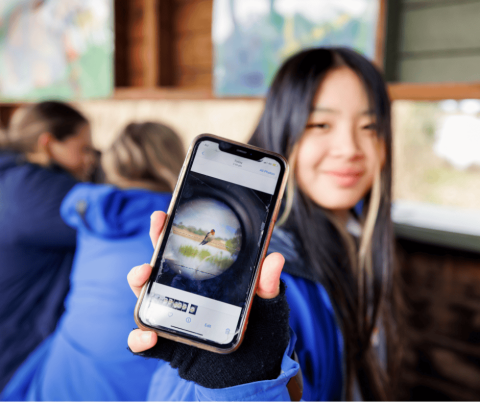Book an excursion to our sewage treatment plant or wetlands, and let our experienced educators take you on a journey through the water cycle.
Western Treatment Plant (WTP)
Explore the Western Treatment Plant and learn about water management and how sewage becomes a reusable resource.
Year 7 - VCE: The future water story. Investigate the importance of water to life, and how we will need to make our cities future-ready and sustainable.
Year 3 - 4: Water and the water cycle. Learn about the key processes of the natural and urban water cycle.
VCE: Outdoor and environmental studies. Learn about the sustainable use and management of the site, from sewage treatment to the Ramsar listed wetlands.
VCE: Environmental science. Discover how the site is managed in response to environmental challenges.
VCE: Systems engineering. Find out about water management and learn about the technology that enables sewage to become a valuable and reusable resource.
Tertiary/TAFE: Systems and Innovation. Find out about water management and learn about the technology that enables sewage to become a valuable and reusable resource.
Virtual tours of the Western Treatment Plant
Participants will be able to ask questions, interact with our educators and learn about the key stages of the sewage treatment process, the world-renowned wetlands and the biodiversity and heritage values of the site.
- Years 3 - 4: Natural and urban water cycle.
- Year 7 - 8: Water in World.
- VCE: Biodiversity and Management.
Edithvale-Seaford Wetland Education Centre
This venue is temporarily closed for bookings until the end of 2025 due to scheduled building improvements. We appreciate your understanding and look forward to welcoming you back next year once the works are complete.
Discover the natural wonders of the Edithvale-Seaford Wetlands – a biodiversity hotspot home to protected bird and plant species – through a tour of our education centre.
Year F - 2 and Year 3 - 4: Wetlands explorer. Discover how water travels through the water cycle and the importance of water to the Edithvale-Seaford Wetlands. Learn about the role of wetlands and how they can be conserved.
VCE: Outdoor and environmental studies. Discover the Edithvale-Seaford Wetlands and develop learn how humans have understood and interacted with wetland environments.
VCE: Environmental science. Discover how the wetlands are managed in response to environmental challenges





